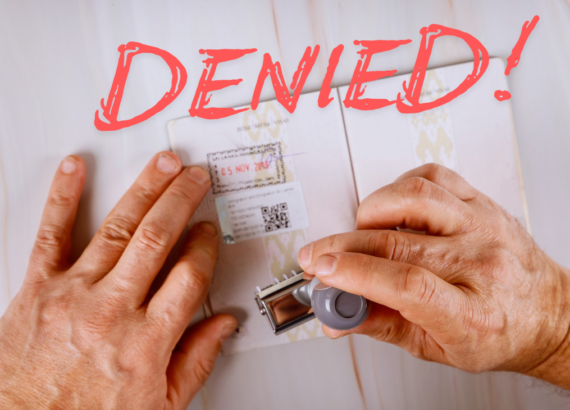Puerto Rico Travel Guide 2025 – How to Get Around In Paradise
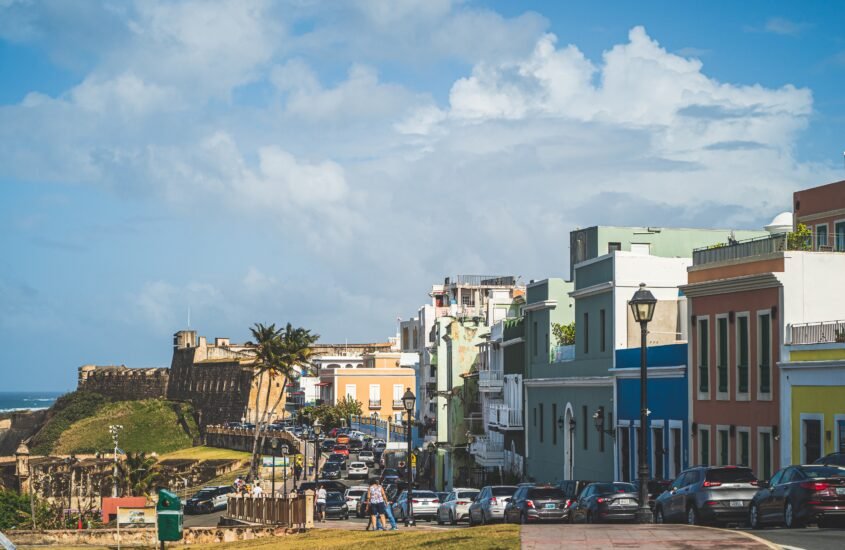
How to Get around in Puerto Rico
By Joel Hartz | Updated May 20, 2025
Disclosures
Use of affiliate and sponsored links help us to provide articles like these.
Affiliate disclosure: Please be aware that this article contains affiliate links, which means we earn a small commission at no additional cost to you. As an Amazon Associate we earn from qualifying purchases.
If you’re looking to travel to Puerto Rico in 2025, here’s what you need to know about getting around in paradise! Getting around Puerto Rico is easy once you know the ropes.
We lived in Puerto Rico as digital nomads and explored all over the island. We have written about our time in Puerto Rico on this website and have even made dozens of videos on our YouTube Channel. So we know first hand what you need to know about getting around Puerto Rico.
This Puerto Rico guide will help you plan your trip and make choose the best transportation options so you can easily make your trip to Puerto Rico a memorable one.
What is the Best way to get around in Puerto Rico?
The best way to get around in Puerto Rico is by rental car, which gives you the freedom to explore at your own pace. However, there are other options available, such as public transportation, taxis, shuttles, scooters, ferries, aircraft and even walking.
Despite Puerto Rico’s relatively small size, measuring in at approximately 100 miles long by 35 miles wide, getting from point A to point B can be a bit more difficult and take longer than expected.
No matter which method of transportation you choose, you’re sure to enjoy your time in Puerto Rico. The island is full of beautiful scenery, amazing beaches, friendly people, and amazing food.
Book Your flight to Puerto Rico with Wayaway
Check out WayAway Plus for Travel Cashback and Discounts
Do you need a car to get around Puerto Rico?
Needing a car in Puerto Rico will depends on your plans. If you are staying at a resort or in the San Juan metro area, then you may not need to rent a car getting around San Juan. The city is easy to navigate on foot (old town) or by using the public transportation system.
There is an inexpensive Metro transit system that includes Buses and the Tren Urbano (light rail). Additionally, many resorts offer complimentary shuttle service to and from the Luis Muñoz Marín International airport (SJU) and local attractions.
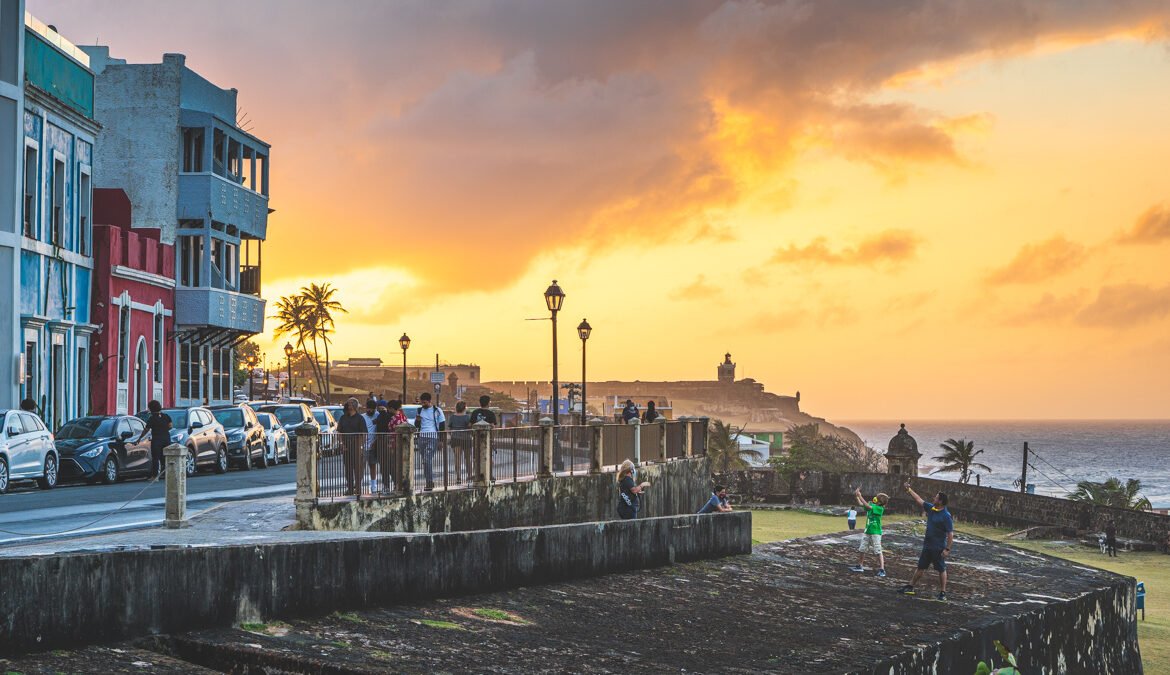
If you’re staying outside the San Juan Metro area or planning to explore the island, you’re going to need a car. Ride-sharing services are largely unavailable outside the San Juan Metro area, and Ponce.
Ways to Travel without a car in Puerto Rico
Taxis in Puerto Rico
Taxis are also readily available and reasonably priced in San Juan and Ponce, but they can be difficult to come by in smaller towns. A taxi ride from San Juan to Fajardo can run you $100 or more one way.
You will want to negotiate the taxi fee ahead of time and ask your driver ahead of time if they take a credit card. While most drivers will take credit cards, it’s always good to have cash as a backup.
Does Puerto Rico have Uber or Lyft?
Navigating Puerto Rico with Uber can be quite challenging as the service is quite limited on the island. You can only find Uber in the San Juan Metro area and in Ponce. Unfortunately, Lyft is no longer in operation in Puerto Rico.
While we were exploring the island, we discovered that Uber drivers are only available in San Juan. So, if you’re looking for a ride-share to take you from the airport to your hotel in San Juan, you might be in luck. However, don’t count on finding one as easily when you’re heading back to San Juan or anywhere else on the island. It’s always good to plan ahead and have alternative transportation options in mind. Trust us, you don’t want to be left stranded! So, why not consider booking a reliable taxi or arranging for a private car service?
Airport Transfers in Puerto Rico
If you’re looking for a hassle-free way to get to and from the airport in Puerto Rico, you can book an airport transfer service. Many of these services offer competitive rates, and some even have hourly rates available. This is a great option if you’re looking to save time and money on your transportation to and from the airport.
Private Transportation in Puerto Rico
Looking for a more personalized transportation experience in Puerto Rico? You can book private transportation for a hassle-free way to get around.
Airport transfers are available, as well as private vehicles of various sizes if you’re traveling with a group or family. Booking private transportation means you can relax and enjoy your trip, without having to worry about driving or navigating unfamiliar areas.
If your just heading to hotel or resort you can also book a transfer service to get you back and forth. Some transfer services will even offer an hourly rate. You can book various sizes of vehicles too if your traveling in a group or as a family.
Get VIP and “Name on Sign” Private Transfers
Intercity Buses and transportation
The public minibuses in Puerto Rico, called públicos, are the cheapest way to travel around the island. These vans run along set routes during daylight hours, either between major cities like San Juan and Ponce, or short-haul between a smaller cities.
There is no central source of information about público schedules or prices, but you can ask around at a público terminal or van stand near a smaller town’s central plaza. Or, you could try asking a local in the town – someone who looks like they might be a regular público user.
They may be able to tell you when the next van is due to arrive, and how much it costs to use the service. Publicos were not running during our time living in Puerto Rico due to social distancing rules.
If you are not keen on traveling in cramped transportation then you might want to skip publicos.
Ferries to Culebra and Vieques
If you’re planning a trip to the islands of Culebra or Vieques, you can take a ferry from the Ceiba terminal on the eastern side of Puerto Rico. Unfortunately, the ferry service isn’t always reliable, so it’s best to plan for some delays.
Additionally, most rental car companies don’t allow their cars to be taken off the main island, so you’ll need to make other transportation arrangements.
- Seven Seas Beach – A Family Friendly Beach in Fajardo Puerto Rico
- 21 Pros and Cons of Life in Puerto Rico
- CasaBlanca Boutique Hotel in Old San Juan Review
- 7 Things We Miss After Living in Rincon Puerto Rico
- Cost of Living in Rincon Puerto Rico as Digital Nomads: How Affordable is it?
Inter Island Air Transport in Puerto Rico
Inter-island air travel is also available in Puerto Rico. Airlines like Cape Air, Vieques Air Link, Air Flamenco and JetBlue offer flights to the islands of Culebra, Vieques and cities like Ponce, Aguadilla and Mayaguez in Puerto Rico.
Driving in Puerto Rico
If you’re planning on driving in Puerto Rico, there are a few things you should know. First of all, you’ll need a driver’s license to drive a car or scooter in Puerto Rico. Any U.S. issued driver’s license will suffice. You’ll also need proof of liability insurance.
Driving in Puerto Rico is generally similar to driving in the United States. Be sure to familiarize yourself with the local traffic laws before driving. Here are some things to keep in mind when driving on the island:
- drive on the right side of the road
- you can make a free right turn unless there’s a sign that says otherwise
- wear your seatbelt or helmet
- watch for blind corners in towns, on hills, and in the mountains
- slow down when you see a school zone
- signs will be in Spanish
Renting a Car in Puerto Rico
Renting a car is the best way to get around Puerto Rico. It offers you the most opportunity to explore beyond the San Juan Metro area and find those “hidden beaches”.
You’ll have the freedom to explore at your own pace and go where you want to go.
It is easy to rent a car in Puerto Rico. Most major U.S. car rental companies like Hertz, Dollar, Fox, Enterprise, Budget and Alamo can be found on the island. San Juan has the largest number of cars for rent and also the best pricing.
You can find rental car companies at the airports and in most towns.
There are smaller car rental companies outside San Juan that generally cater to the more adventurous driving or off roading. Jeep rental in Puerto Rico will also come at at a higher price.
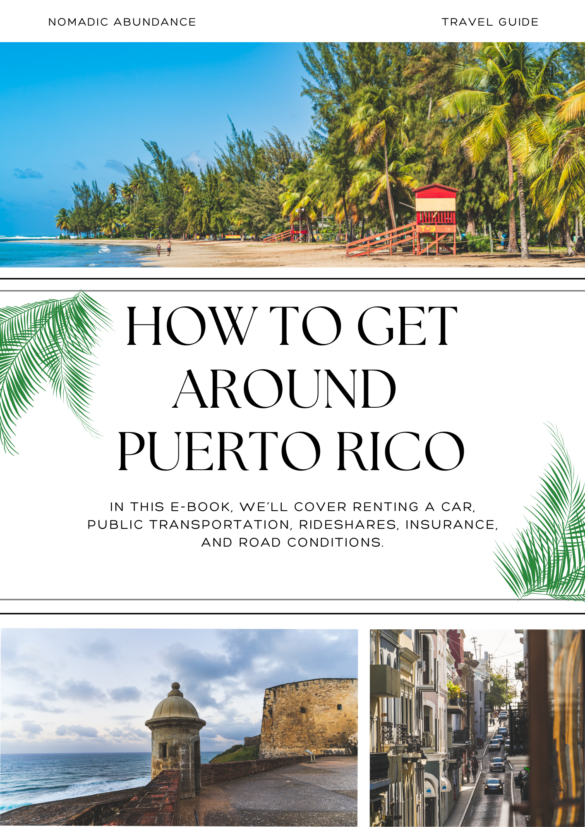
This 18 page E-Book covers what you need to know about driving in Puerto Rico.
Filled with easy to read full color pages, available in PDF format. Take this guide with you on your phone, tablet or print a copy for quick access.
Recently updated! Version 1.2
What are the requirements to rent a car in Puerto Rico?
Renting a car in Puerto Rico has similar requirements to the United States mainland. You need to be 25 years old (some companies like Alamo may let you rent at 21 and others under 70 years of age). Have a valid driver’s licence and a credit or debit card. You are also required to carry Liability insurance. Puerto Rico has a high rate of car accidents, so it’s important to be protected.
If your traveling from another country don’t forget to have a international drivers permit as well.
Does your car insurance cover a rental car in Puerto Rico?
Most United States car insurance policies will usually cover a rental car in Puerto Rico. The major U.S. auto insurance providers offer coverage in all U.S. states and territories, such as Puerto Rico, as well as Canada and Mexico.
We recommend that you verify your coverage with your insurance company in advance. You may still need to provide proof of liability insurance along with a copy of your policy and/or a letter from your insurance company stating that you can drive and rent a car in Puerto Rico.
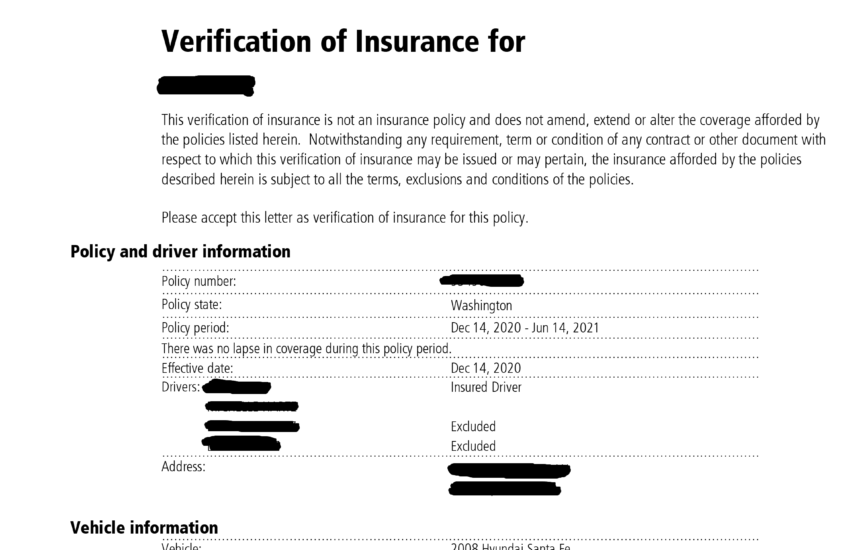

Do I need Collision Damage Waiver Insurance (CDW) in Puerto Rico?
Car rental company will offer to sell you optional insurance coverage against damage to the car called Collision damage waiver insurance (CDW), or Loss damage Waiver (LDW) for an additional fee.
You may already be have Collision Damage Insurance coverage with your own personal auto insurance policy. In this case verify with your personal insurance and bring a copy of your policy.
Credit Cards may offer you Collision Damage Waiver Coverage
Often the credit card you use to book and pay for your car rental in Puerto Rico will often include Collision damage waiver coverage for up to 30 consecutive rental days.
That’s why we use a premium travel credit card. Just like our Chase Sapphire Preferred Card and our Chase Southwest Premier Cards. Double check this with your Credit card company ahead of time.
You may even need a letter from your credit card company stating it offers CDW coverage to show your rental car company in Puerto Rico. Either way you can expect a deposit of $100 – 500 to be placed on your debit or credit card as a hold against damage to the rental car.
One more note about debit cards. We do not recommend using a debit card ever for any deposits or paying for any travel expenses. You risk losing access to your funds due to holds on your card. Always use a credit card as they offer protections against fraud and won’t hinder access to your funds.
Why is it so expensive to rent a car in Puerto Rico?
It is expensive to rent a car in Puerto Rico due to most major car rental companies selling off the bulk of their inventory in 2020. With the rebound in travel since, available car inventories are still catching up with the rise in demand. This is due to supply chain issues, demand increasing, hurricanes and subsequent inflation.
Gone are the rental car deals in Puerto Rico
Before the pandemic, you could generally rent a car from San Juan for about $20 a day (excluding taxes and tolls). Bringing your weekly rates down to just under $200. At the beginning of 2021 those costs nearly tripled to around $600 a week for an economy car.
Now in 2023 car rental costs are still skyrocketing even higher! Expect to see weekly car rental prices in Puerto Rico of $300 – 2500 during the high seasons December – April and July – August. If you can, avoid the U.S. Holidays to save money.
Hot Tips for Car Rentals in Puerto Rico
- Book online in advance to save cash. I have had good luck with Sixt.
- Find rental cars on sites like Rentalcars.com, Expedia, Discover cars, or Priceline.
- Not all rental car companies are located on site at the airports
- Some rental car companies like Sixt offer shuttles to their off site location near the airport.
- Others like Alamo are on site (in the parking garage) at the Luis Muñoz Marín International airport (SJU)
- Check the hours of operation as many car rental companies may not be open when you’re returning your vehicle.
- Understand how to return your rental car ahead of time.
- You may need to call your PR car rental company for a pick up if off site.
- This could add an hour to your trip. This is important to remember if you are catching a flight home.
Be Aware of Electronic Toll Roads in Puerto Rico
Puerto Rico has moved to electronic tolling for the Auto Expresso (toll) routes. The Auto Expresso works just like the “E-ZPass”, “SunPass”, or “Go to Go!” you may be familiar with in the United States. All car rentals must use this electronic system while driving on the Auto Expresso routes and are not allowed to use the cash toll booths.
We learned this accidently on our way to Fajardo! We missed our turn and pleaded our ignorance with the toll booth lady. She eventually relented and let us pass (to the next exit) after offering to pay double the toll.
Your rental car will have an Auto Expresso pass already installed. To use the toll roads known as Auto Express routes, you must add this option to your rental prior to using the toll roads.
If you do not, you’ll incur expensive marked up fees from your car rental company every time you use an Auto Expresso route.
We highly suggest asking about this if you intend to drive a lot around the island. This is most likely going to be an add-on fee available when you pick up your vehicle.
For our Sixt car rental in Puerto Rico, the price to cover all toll fees was $10 a day. Fees maxed out at 10 days for $70 if you rent for longer than a week.
Auto Expresso Toll Roads in Puerto Rico
Auto Express Toll routes can be found on all but the West side of the Island. You can avoid driving on the express routes, but it will add a lot of time to your trip.
For example, traveling on the express route from San Juan to Rincon can save nearly an hour (in traffic), bringing the 3.5 hour trip down to 2.5 hours.

- PR-5 – Connects PR-22 with Baymón and has one toll.
- PR-17 – Connects PR-26 with PR-20 and has one toll.
- PR-20 – Connects PR-1 to PR-2 (north) and has one toll.
- PR-22 – Connects San Juan to Hatillo and has six tolls.
- PR-52 – Connects Río Piedras with Ponce and has seven tolls.
- PR-53 – Connects Fajardo to Salinas and has five tolls.
- PR-66 – Connects Carolina to Río Grande and has three tolls.
Roads and Driving Hazards in Puerto Rico
Generally speaking the Highways and the main roads are in good to decent condition like you would find in most U.S. states. Although the roads in Puerto Rico can be a major hazard if you’re not paying attention.
Watch out for potholes, bumps, uneven surfaces, dirt roads, missing speed limit signs, busted railings, horses, iguanas, other animals, bicyclists, and randomly stopped cars.
You know, all of the normal stuff you would find out in the rural areas in the states, except for the iguanas (outside of Florida).
Be sure to familiarize yourself with the local traffic laws before driving. And, if you’re planning on driving into the mountains, be aware that the roads can be narrow and winding.
Pot Holes and Dirt Roads
Let me reiterate again the road hazards… the two that get you with a rental car are the potholes and the crazy bumpy dirt roads. Unfortunately the washed out and bumpy dirt roads are the ones that lead to all the really cool beaches! Be sure to drive slowly and carefully.
This is what all the horror stories about renting cars in Puerto Rico come from! Major damage to the tires, wheels, and underside is how most people lose their deposits.
Without CDW, your out-of-pocket repair costs could be worse. Yet another good reason to have a Collision Damage Waiver.
Tip: Rent a SUV or jeep with higher clearance if planning on more adventurous travels in Puerto Rico
Horses
I mentioned horses, yep riding a horse on the streets is perfectly legal in Puerto Rico except in a few small municipalities. We encountered this several times during our stay, mostly on the weekends.
Be on alert especially just after sunset as this seemed a popular time for horse riders to be heading home, and often without any safety gear like headlamps or reflective attire.
Some are locals and some are horseback riding tours returning from an excursion.
Traffic Signs and Signals in Puerto Rico
In Puerto Rico speed limit signs are in miles per hour, but distances are in kilometers.
Most roads, including some major routes we drove on, can vary between narrow lanes and almost one lane. There may or may not be a dividing line visible on the roadways either. In smaller towns, one-way streets are common. Look for the “SOLO” sign to signify a one way street.
More Safe Driving Tips in Puerto Rico
Practice defensive driving in Puerto Rico. Watch for other cars as the locals drive in a very casual manner.
Most of the people we encountered on the roads didn’t use turn signals and didn’t pay much mind to speed limits. Speed limits seem to be regarded more like recommendations, like our experiences driving in California.
Smaller towns don’t have many stop signs or stop lights, so it’s common for a vehicle to stop to let another vehicle pull out. So, be aware of this to avoid accidents.
Parking in Puerto Rico
Parking in Puerto Rico is a pain. There is not a lot of parking in Old San Juan or Ponce and you seldom find large parking lots like in the states. In the smaller towns or along beaches, parking is almost impossible to find on weekends or during high season.
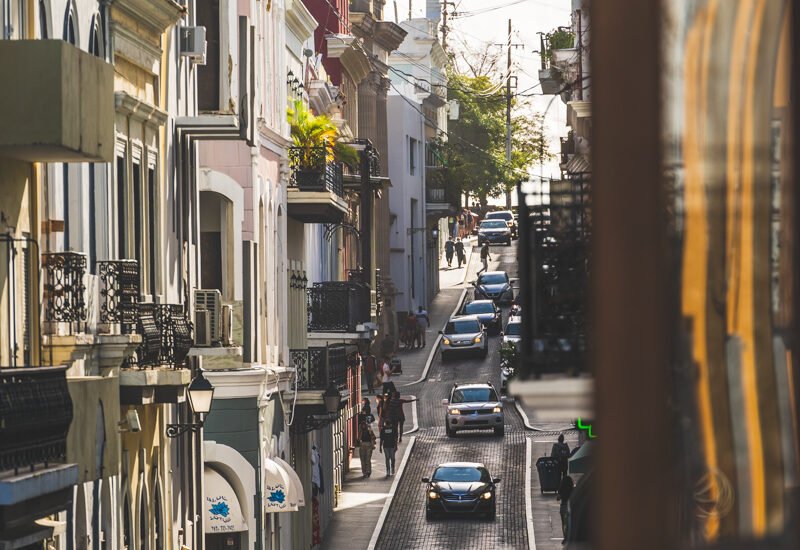
Many businesses may be located on the sides of a busy roads. During our travels in Puerto Rico, we often saw locals park their cars on the sidewalk.
Street parking is also very common. Just be sure to stay completely off the road to avoid getting a ticket. Beware of road side parking as your vehicle may get clipped by passing cars on the narrow roads.
In congested areas like Old San Juan, Condado, Bayamon you might want to find private parking or expect to park further away.
Final Thoughts
Puerto Rico is a beautiful island with plenty to see and do. The best way to enjoy Puerto Rico is definitely by car. Renting a car offers the most flexibility allowing you to get to the beaches and hidden gems.
When deciding how to get around, consider what will work best for you given the amount of time you have, where you will be staying and what you want to see and do.
For shorter stays or if you sticking close to the Greater San Juan area then using Uber, taxis and public transportation should be fine. If your like us and are staying for longer than a week renting a car is your best option.
Whichever way you choose to get around, you’re sure to have a great time exploring all that Puerto Rico has to offer!
We hope this guide has helped you plan your trip!
More Puerto Rico Reading
- Seven Seas Beach – A Family Friendly Beach in Fajardo Puerto Rico
- 21 Pros and Cons of Life in Puerto Rico
- CasaBlanca Boutique Hotel in Old San Juan Review
- 7 Things We Miss After Living in Rincon Puerto Rico
- Cost of Living in Rincon Puerto Rico as Digital Nomads: How Affordable is it?
- Five Rincon, Puerto Rico Beaches You Need to Experience
FAQ
Do you need car insurance to rent a car in Puerto Rico?
Liability insurance is required to rent a car in Puerto Rico. Most major U.S. auto insurance providers offer coverage in all U.S. states and territories, such as Puerto Rico, as well as Canada and Mexico.
Verify your coverage with your insurance company in advance. You may still need to provide proof of liability insurance along with a copy of your policy and/or a letter from your insurance company stating that you can drive and rent a car in Puerto Rico.
Is Lyft available in Puerto Rico?
Lyft is no longer operating Puerto Rico.
Do rental cars pay tolls in Puerto Rico?
Puerto Rico uses electronic tolling for the Auto Expresso (toll) routes. All car rentals must use this electronic toll system while driving on the Auto Expresso routes and are not allowed to use the cash toll booths.
Are you ready to embrace full-time or part-time travel, or is retirement just around the corner?
Join the tribe, and let’s kickstart your slow travel journey!

At Nomadic Abundance, we’re here to help you tackle the overwhelm of planning your new life abroad. Our membership offers the resources and guidance you need to make your transition to slow travel as seamless as possible.
Find out more information go to nomadicabundance.com or in video form on YouTube.
Thank you for supporting the site, Happy Wandering!
You’re almost there!
Enter your email below to get your FREE copy of the eBook: Escape The USA: How To Start Traveling and Live Overseas!





